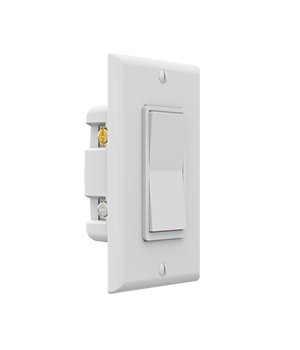Z-Wave Switch for Your Smart Home
Among the most reliable options are Z-Wave switch—versatile devices engineered to enhance smart home functionality while ensuring easy installation and operation. This discussion highlights why Z-Wave switch are an optimal choice for residential automation.
Understanding Z-Wave Switches
A Z-Wave switch is a smart device that provides wireless control over lights or appliances. Z-Wave is a communication protocol tailored for home automation, known for reliability and extended range. Unlike Wi-Fi or Bluetooth, Z-Wave uses low-frequency radio waves, enabling effective communication through walls and other barriers, enhancing connectivity stability.
Z-Wave switches enable users to remotely manage lighting, configure schedules, and integrate seamlessly with other Z-Wave devices in the ecosystem.
Why Opt for a Z-Wave Switch?
1. Robust Mesh Networking
Z-Wave devices form a mesh network, where each device acts as a signal repeater, strengthening the network. Adding more Z-Wave devices improves both stability and reliability, mitigating communication issues.
2. Seamless Integration
Z-Wave switches are compatible with platforms like SmartThings and Wink, allowing unified control over various household systems. Unlike other protocols that may restrict users to specific brands, Z-Wave provides flexibility to create an optimal environment.
3. Energy Efficiency
Z-Wave technology is ideal for sustainability-conscious users, consuming significantly less power than Wi-Fi-based devices. This results in lower energy costs and longer battery life for components.
4. Advanced Security
Z-Wave uses AES-128 encryption, a standard also used in financial institutions, ensuring that smart home networks remain protected against cyber threats.
Applications of Z-Wave Switch
1. Lighting Automation
Z-Wave switches automate lighting, turning lights on when you arrive home or scheduling outdoor lights to deactivate at dawn, providing hands-free convenience and energy efficiency.
2. Appliance Control
Z-Wave switches also manage a variety of appliances, from ceiling fans to kitchen devices, adding significant convenience.
3. Scene and Automation Creation
Users can create customized scenes like “Movie Night,” where lights dim and entertainment systems activate with a single button, enriching the smart home experience.
Setting Up a Z-Wave Switch
Step 1: Select the Switch
Choose a Z-Wave switch that meets your requirements, ensuring compatibility with your hub and selecting the appropriate type—dimmer, standard, or multifunction.
Step 2: Install the Switch
Turn off power at the circuit breaker before replacing the existing switch. Consult a licensed electrician if necessary.
Step 3: Pairing
Activate pairing mode on both the hub and switch. Once paired, name and assign the switch within the hub application.
Step 4: Configure Automations
Set up automations such as turning off lights when leaving home or turning them on at dusk to maximize efficiency.
Key Advantages of Z-Wave Switch
1. Broad Compatibility
Z-Wave switches work with various smart devices, like locks and thermostats, for cohesive integration and enhanced efficiency.
2. Mesh Network Reliability
Z-Wave’s mesh network minimizes communication disruptions, ensuring a smoother user experience.
3. Voice Assistant Integration
Z-Wave switches integrate with voice assistants like Amazon Alexa and Google Assistant, providing easy voice control for added convenience.
Conclusion: Streamlining Smart Home Functionality
Z-Wave switches are an exemplary choice for those seeking reliability, efficiency, and security. Their compatibility, robust networking, and advanced encryption make them vital for an integrated smart home.
For those looking to enhance their smart home, Z-Wave switches provide effective solutions to boost comfort, control, and convenience. Embrace Z-Wave technology today and transform your living space into an intelligent, automated home.



